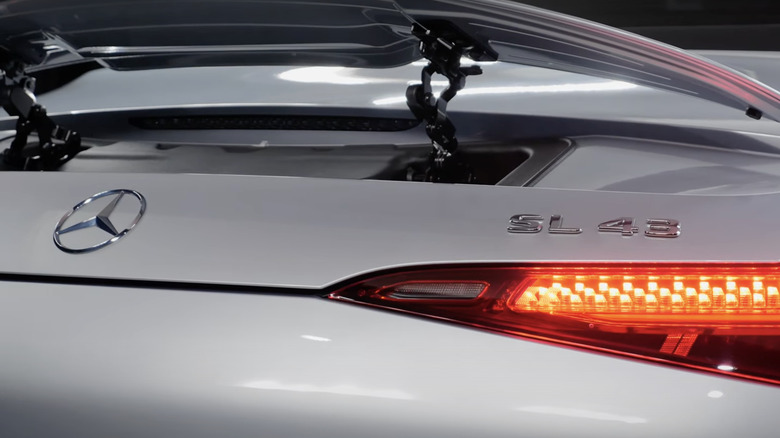Here's What Mercedes Benz's Most Popular Model Names Mean
Mercedes-Benz has a long history of automotive development dating back to the Patent Motorwagen invented by Carl Benz in the late 19th century. The automaker originated in companies founded by Benz, Gottlieb Daimler, and Wilhelm Maybach, and in 1900, it was known as Daimler Motoren-Gesellschaft (Daimler Motor Company).
At that point, existing motorcars still kept to the Motorwagen's design, which was based on horse-drawn carriages. DMG dealer Emil Jellinek's demands for a more drivable car with a stronger engine inspired the development of a new model, christening it "Mercedes" after his daughter. DMG merged with Benz's company in 1924, and the newly formed Daimler-Benz Auto Group debuted two models at the 1926 Berlin Motor Show. The W 02 had a two-liter engine, and the W 03 had a three-liter motor.
In the century since, Mercedes-Benz has grown into the second-best-selling luxury car brand in the world, trailing only BMW. In that time, its product line has expanded to include SUVs, roadsters, family-friendly station wagons, the versatile Sprinter van, and a line of commercial trucks. This wide variety of vehicle offerings has led Mercedes-Benz to develop a code it uses when applying badges to its models. There is a structure to the naming convention Mercedes uses, but what do the letters that make up Mercedes model names mean?
Vehicle class is indicated by the first letter
The first letter in a Mercedes-Benz model name denotes the class; with a couple of exceptions, vehicles get larger as you move through the alphabet. A and B class vehicles are subcompacts, C class designates a compact, E class is for mid-sized, and S class vehicles are full-sized. G class indicates a luxury off-road vehicle, and Mercedes reserves the GL prefix for SUVs. Four-door coupes all start with a CL in their model name, roadsters use SL, and concept and electric vehicles all have model names that begin with EQ.
If you see the letters "AMG" on the rear of a Mercedes model, that is an added designation the automaker uses for high-performance vehicles. AMG is a company that made its name in the 1970s and '80s by modifying Mercedes vehicles to boost performance. The letters in the company name honor the founders, Hans Werner Aufrecht and Erhard Melcher, and Aufrecht's birthplace, Grossaspach.
Mercedes and AMG officially became partners in 1990, and their first model produced jointly was the 1993 AMG C36. The AMG-tuned 3.6 liter I6 engine in the C36 produced 276 horsepower and 284 pound-feet of torque and could haul the sedan from 0 to 60 mph in 5.7 seconds. Currently, Mercedes-Benz offers more than three dozen AMG models, including vehicles from nearly every class listed above.

